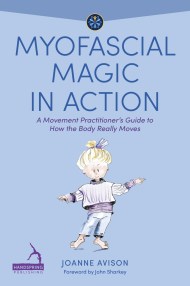
Joanne Avison
Joanne Avison is an international teacher of applied structural anatomy for movement and manual practitioners in a variety of fields. She is a professional Structural Integration practitioner, member of IASI (International Association of Structural Integrators) and certified teacher (KMI, Anatomy Trains 1998-2005: Tom Myers’ school) and Director of the Art of Contemporary Yoga Teacher Training, London, UK. The school registration (2006 onwards) qualified as an RYS-500, with Yoga Alliance (US), European Yoga Alliance and Indian Federation of Yoga. As an advanced Yoga Practitioner and Certified Yoga Therapist, C-IAYT (Certified by International Association of Yoga Therapists), Joanne appreciates the art, craft and science of yoga and body architecture. Her Master’s degree in Spiritual Sciences has deepened her understanding of yoga and the philosophy behind it, that relates closely to how the physical body integrates and animates form. For Joanne the study of philosophy and anatomy are not necessarily separate, which is a unique approach to integrated practice.
Joanne is also trained in Craniosacral Therapy, continuously working in ART (Autoimmune Response Testing) and FSM (Frequency Specific Microcurrent) to further her studies in complementary health and complementary medicine. She is also a graduate of the CMED Institute, USA. After over 20 years of manual and movement practice, she appreciates deeply the resonance field(s) the body animates as a living form.
As a member of the Biotensegrity Interest Group (BIG), Joanne is fascinated by the application of biotensegrity principles to the understanding of the human blueprint and natural structural organisation in motion. Her writing and workshops are devoted to making this emerging context for human movement applicable and clearly understood. “It makes sense of how we make sense of our world, literally and symbolically.”
“BioTensegrity is an emerging context for what I refer to as ‘biomotional integrity’. That is – how we move the way we do. Understanding the fascia and the fabric of our form is relatively meaningless, without the architectural organisation of that fabric, explaining how it permits movement and indeed manages the movement forces we move (that move us). We are formed under tension; pre-stressed or pre-stiffened – but what does that mean to us as movement teachers or manual therapists? What are the implications of tensional forces through the matrix of our living, animated form? The fascia is a force transmission system. Biotensegrity offers a very compelling paradigm that makes sense of its many structures and functions and multifaceted assets. It also transforms our understanding of connection and resonance; with ourselves and others.”
Read More


